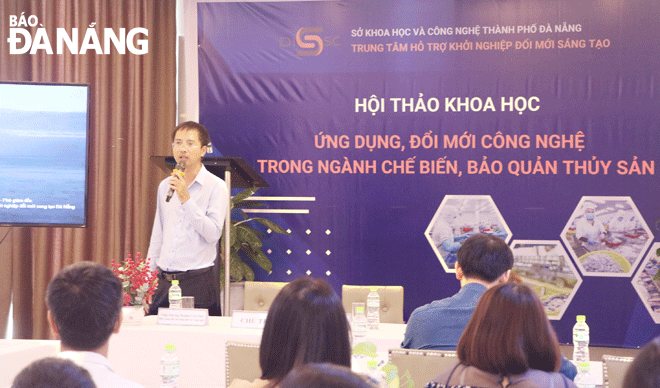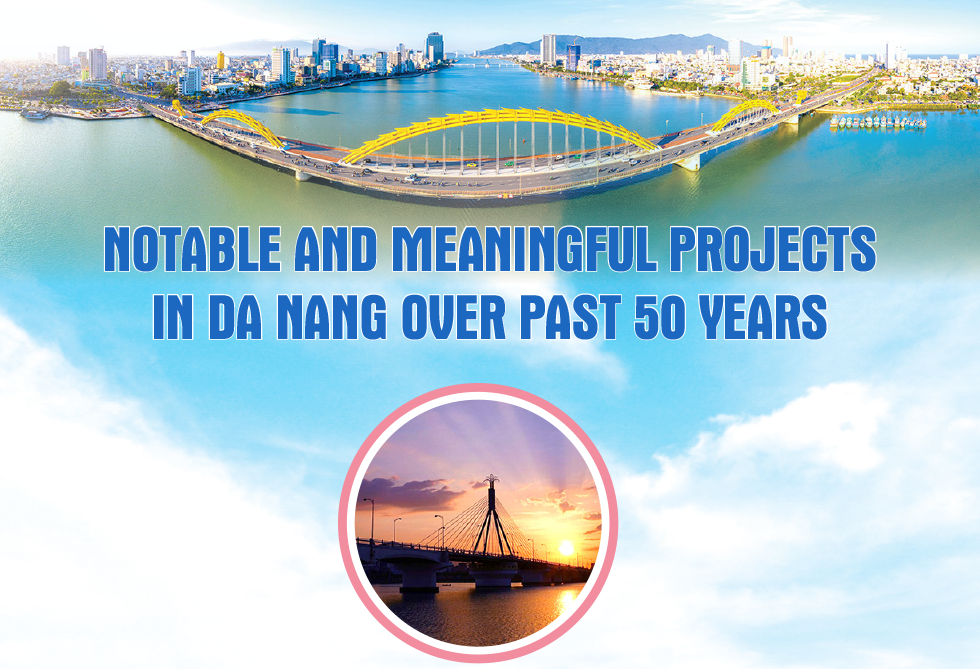Tech innovations applied in seafood processing, preservation industry
How to apply the latest technological innovations in the seafood processing and preservation industry was taken into intensive discussions at a recent seminar held by the Da Nang Innovation Startup Support Centre under the municipal Department of Science and Technology.
 |
| A view of the seminar on applying the latest technological innovations in the seafood processing and preservation industry. Photo: VAN HOANG |
At the event, businesses and investors across the city were briefed on the mechanisms and policies in support for technological innovations in the production, processing and preservation of aquatic products, as well as potential technologies for the seafood industry in the coming time such as radiation and AI technologies.
As reported by Mr. Vo Duc Anh, the Deputy Director of the Da Nang Innovation Startup Support Centre, a recent survey shows that only about 40% of the total seafood of enterprises in the city use support production technologies.
Many businesses are, for the time being, in need of support for their activities such as research and deployment, technology transfer, technology consultancy and access to resources, programmes and projects.
According to Mr. Le Xuan Vinh, a representative from the Da Nang campus of the Radiation Technology Research and Development Centre, seafood and aquatic products are one of the five food groups that are allowed to be subject to irradiatation in Viet Nam.
Russia began irradiation of fruits, vegetables, spices, cereals, meats and poultry in 1959, and many other countries began using the process in the 1970s.
Currently, food irradiation is approved for use in over 55 countries worldwide. Some 20 countries, including Argentina, Australia, Bangladesh, Thailand, the U.S. and Viet Nam have legislation allowing phytosanitary uses of irradiation.
In Viet Nam, there are 6 irradiation facilities, of which a center in Da Nang is the only service provider for the Central Viet Nam and Central Highlands regions.
The radiation process exposes food to ionizing energy, which can come from three sources: gamma rays, machine-generated electrons, or X-rays. As ionizing energy passes through the food and its packaging, microbes, bacteria, insects, insect eggs or larvae and parasites are killed.
The application of radiation technology in the seafood industry will help businesses have more advantages in exporting, limiting disease-causing organisms, prolonging storage time and eliminating parasites.
Mr. Truong Van Nam, the Central Branch Manager of Iwanna Group Viet Nam JSC introduced about the application of AI technology in production activities. The digital transformation in production will help optimise efficiency and reduce operation costs for businesses, thereby improving product quality and reducing damage to machinery.
Reporting by VAN HOANG - Translating by A.THU








